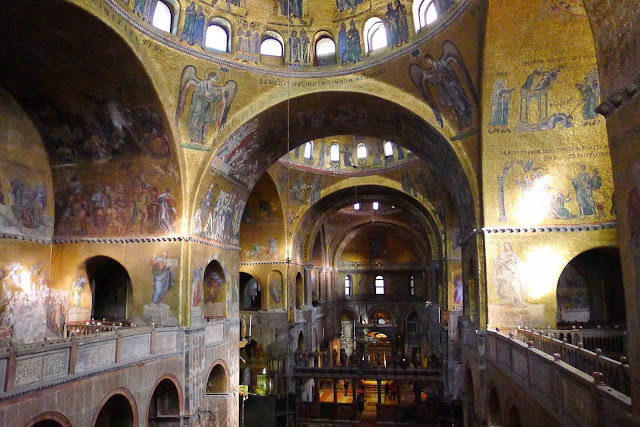Corregidor Island and the Bravery of the Filipino-American Forces During WWII
When Deal Grocer announced an all-inclusive tour of Corregidor (including boat ride, island tour and lunch buffet) for just $25 a person, I knew that this was too good a deal to miss!
Not only had I never been to this famous key WWII battleground, but this was also to be an excitingly different weekend excursion with my fiancee, Monicca, and our friends, Aaron and Cole.
* The tour is operated by Sun Cruises Philippines, whose terminal is located near the Cultural Center of the Philippines. To get to the island, we took an hour long, comfortable, catamaran ride.
* First view of Corregidor upon setting foot on the island. Located on the entrance of Manila Bay, Corregidor served as the largest among a group of islands forming a natural harbor defense around the bay. Fortified with several coastal artillery and ammunition magazines, the island served to safeguard the City of Manila against any naval attack.
* Since it is a rather large island, various Trams (open-air mini-buses) took as around to various places of interest in the island where we were given ample time to explore each one. Arguably, one of the most famous stops in the tour was the statue of Gen. Douglas MacArthur, the very well-regarded American general and field marshall of the Philippine Army during World War II.
* The Philippine Heroes Memorial is a complex containing 14 murals depicting heroic battles fought by Filipinos from the 15th Century up to the present day.
* Within the Memorial is a room containing a collection of paintings and photographs showing the Japanese atrocities during the war. Atrocities include the mindless torture of innocents (upper left), the raping of the Philippine women (known as comfort women, lower left), mass genocide (upper and middle right) and the Bataan Death March (lower right) wherein 80,000 Filipino and American prisoners of war marched 128km, most of whom to their deaths.
* Of course we all know how that ended for Japan. Understandably, most tour guides don't recommend that the Japanese tourists check out this room, as to this day the war is a very sensitive topic back there.
* The Japanese Garden of Peace was built as a memorial to the Japanese soldiers who served and died in the island during WWII. Along with various photographs and memorabilia (including the actual flag raised by the Japanese to celebrate the capture of Corregidor), the complex contains a couple of shrines, markers and a praying area. Conversely, most American/Philippine veteran guests get aggravated upon seeing that the Japanese have a memorial here dedicated to their dead. This has lead to several acts of vandalism by these heroic servicemen throughout the years.
* Rather than focus on the memorials at the Garden of Peace, I think most of the tourists today just go for the various artillery located right beside!
* The Malinta Tunnel is a sprawling tunnel complex built by the Americans to serve as their bomb-proof headquarters which proved to be useful when the Japanese started bombarding the island, leveling all the buildings. During the Battle of Corregidor, Malinta became the HQ of Gen. MacArthur and the USAFFE, the seat of government for the Commonwealth of the Philippines under Manuel Quezon, and later a hospital for the soldiers defending the island.
* Today, Malinta is a light-and-sound interactive show, showcasing highlights from the Battle of Corregidor and the ordinary lives of servicemen stationed here during the War. For a fee, the tunnels are open to the public at night for "Ghost Hunting" activities.
* Battery Way is an artillery battery containing four 12-inch mortars. An artillery battery is a group of guns, mortars, rockets or missiles grouped together to make battlefield communication, reloading and targeting so much more effective and efficient.
* Pictures of the various ruined buildings all over the island. Previously, these would have been barracks, administration buildings, cinemas, mess halls or even recreation centers.
* At its peak, Corregidor had 23 batteries consisting of 56 coastal guns, 13 anti-aircraft artillery and 10 Sperry searchlights. The island's longest-ranged coastal piece was this 12-inch (305mm) artillery gun located at Battery Hearn, which could hit a target 27km away!
* Some guns stand "limp", others stand "erect" (and supported by various people). I wonder what that chap on the right is doing?
* The Pacific War Memorial was completed by the US Government in 1968 to honor the American and Filipino soldiers who served in WWII. One of the more tranquil parts of the tour, this area is ripe for reflection, meditation and remembrance of the sacrifices of our war veterans.
* Of course, Aaron and I also decided to "cup and pinch" the moment.. respectfully of course.
* Another shot of the War Memorial, this time featuring the interior of the Corregidor museum (lower left), the actual American flag of Corregidor (lower right) and statue showcasing the bond and friendship formed by the US and Philippines back in the war.
* No Trolls allowed!
* Aaron and I appreciating the various guns sprawled across the lawn in front of the War Memorial. I don't know what the hell we're supposed to be doing on the right.
* Our last stop was the Corregidor lighthouse, built in 1853. While we did make it up to the top of the structure, I was too scared of the height to draw out my camera!
* Finally a shot of the explorers with their significant others, who were game enough to accompany these two WWII and history buffs to the island and actually put up with their shenanigans!


























Comments
Post a Comment